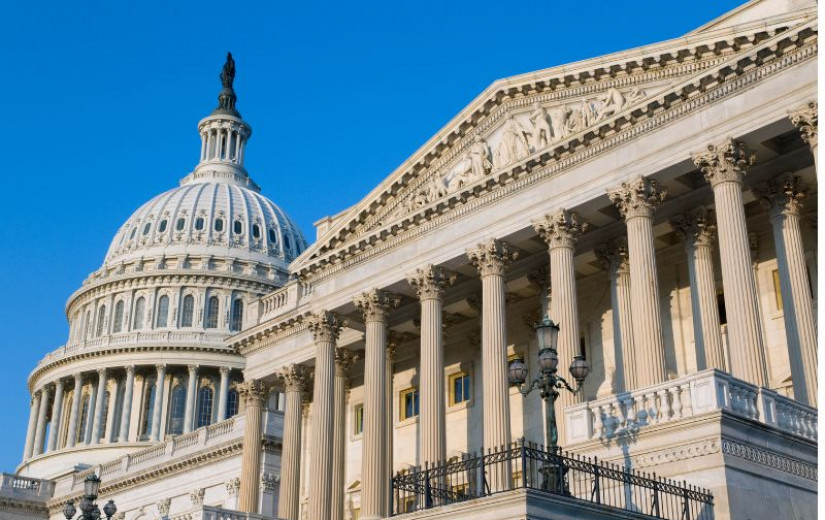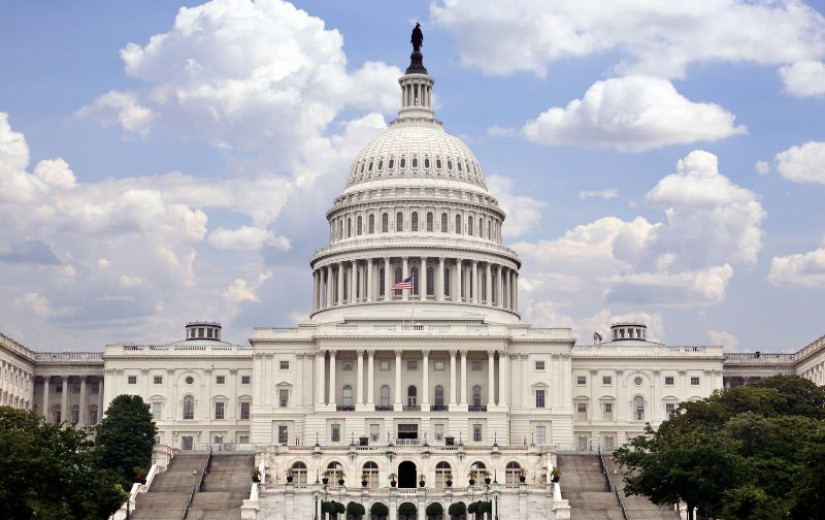

It’s a small miracle that Epic Universe even exists, let alone is this good. The third theme park at Universal Orlando features revolutionary rides and lands based on Nintendo, Harry Potter, How to Train Your Dragon, classic monsters and more. As this Epic Universe review will explain, the park is something special–even if imperfect and falling short of the hype.
Epic Universe joins the Universal Orlando Resort lineup alongside its two established theme parks, Universal Studios Florida and Islands of Adventure. There’s also Volcano Bay Water Park and 11 resort hotels–the majority of which were built in the last decade in anticipation of this new park turning Universal Orlando into a destination resort.
For its part, Epic Universe features five themed lands: Celestial Park, Dark Universe, How to Train Your Dragon – Isle of Berk, Super Nintendo World, and The Wizarding World of Harry Potter – Ministry of Magic. The park is situated on a 750-acre site with ample expansion pads, making it the Universal site with the largest footprint in the United States.
At opening, Epic Universe features 11 rides and two major shows, plus a wide variety of atmospheric entertainment, play areas, and more. This review focuses on the themed lands and Epic Universe in a holistic sense, largely eschewing the ride roster in favor of the bigger picture park. If you’re looking for a straightforward look at attractions, consult our Ride Rankings & Reviews for Epic Universe.
What we will say is that 11 rides is a rather robust roster for a brand-new theme park. It’s a higher number than Animal Kingdom boasts today, despite that park opening in 1998. In terms of attraction lineups and the overall experience, the Walt Disney World park to which Epic Universe is most comparable is Disney’s Hollywood Studios, a park that opened in 1989.
Not only that, but the top tier attractions are good. We awarded three 10/10 scores and another trio of 9/10 or higher scores. Only a couple of attractions scored below 7/10. All of this is to say that Epic Universe has a formidable ride roster from opening day.

To say theme park fans are anxiously awaiting Epic Universe would be a massive understatement. It’s the first new theme park opened by Disney or Universal in Central Florida in the 2000s, following the debut of Universal’s Islands of Adventure and Disney’s Animal Kingdom in the final years of the 1990s.
Epic Universe is the first major theme park in the United States since Disney California Adventure debuted back in 2001. In the 5 years that followed, Disney debuted two new international parks, the Walt Disney Studios Park in Paris and Hong Kong Disneyland. Obviously, these parks were built by Disney and not Universal. However, they’re mentioned for one simple reason: they were all boondoggles.
For a variety of reasons, Disney underinvested in the original construction of DCA, WDSP, and HKDL. Consequently, the company has invested vast sums–far exceeding their original costs–fixing each of these parks over the course of the last 15 years (also a longer timeline than the original construction). The final such project is the reinvention of the Walt Disney Studios Park, which is to become Disney Adventure World next summer. It should be epic!

After putting the project on ice during the pandemic, Comcast resumed work on Epic Universe in March 2021. My immediate reaction when that happened was excitement. That was followed shortly thereafter by a sinking feeling, wondering whether Universal was setting itself up to follow in Disney’s footsteps with those ill-advised projects. Would Epic Universe have a 5-year initial build-out followed by a decade-plus of “fixing” an undercooked concept?
Thankfully, that is not even remotely the case. Epic Universe is better than the Walt Disney Studios Park, Disney’s California Adventure, or Hong Kong Disneyland were when each opened in the aughts. This might seem like feint praise, but those fears were perfectly legitimate. Comcast opted to power forward on Epic Universe at a time when economic uncertainty was high, inflation on materials began skyrocketing, supply chain disruptions were ongoing, and staffing shortages–especially on construction projects in Central Florida–were rampant.
So yes, the simple fact that Epic Universe is opening only a few short years later and was not value-engineered or budget cut into oblivion is a small miracle. It’s worth celebrating just how many resources Comcast threw at this theme park, and just how close it looks to aerial concept art released way back in 2019 when the world was a different place. Given the surrounding real world circumstances, Epic Universe could’ve turned out very badly–worse than Disney’s worst parks from the 2000s.

Instead, Epic Universe will go down as one of the most expensive theme parks ever built (if not the costliest), with an estimated cost north of $6 billion and potentially above $7 billion.
Thankfully, both Disney and Universal learned a lot of lessons from the underbuilt parks of the aughts, making the real question if Epic Universe lives up to its own hype and is better than the more recent parks that have opened in Asia. Specifically, is Epic Universe is as good or better than Universal Studios Beijing, Shanghai Disneyland, or even Tokyo DisneySea?
To answer that, we’ll take a portal-by-portal look around Epic Universe, entering through the towering Chronos at the front entrance…

Celestial Park
Whether arriving through the front entrance or Helios Grand Hotel, guests flow through Celestial Park to the left or right of the water features that likewise flow from Luna, goddess of the moon, to Apollo, god of the sun. With acres of rolling gardens, chasing waterways and strolling pathways, Universal Orlando has boasted that “Celestial Park puts the ‘park’ back in ‘theme park.'”
Celestial Park features over two-dozen lush living gardens nestled along shimmering waters surrounded by stunning architecture inspired by astronomical and mythological elements. Here, guests can relax while taking in the sights and sounds around them, board a shooting comet for an exhilarating roller coaster adventure, dine on delectable cuisine, shop exclusive merchandise to commemorate their visit and more.
Celestial Park’s seven acres of water where a multitude of fountains sway, dance – and even reach heights up to 135 feet in the air – to music and interactive lighting from day to night. Celestial Park acts as a world between worlds, and is essentially the hub through which guests enter the portal for each substantive land in the park. Think of it like Main Street at Magic Kingdom or World Celebration at EPCOT.

Let’s part by focusing on the strengths of Celestial Park. Nighttime is an obvious one, when the area is unquestionably at its prettiest–and is arguably the best land in the entirety of Epic Universe. (Note: this section is a summarized version of our standalone Celestial Park Review: Epic Universe’s EPCOT Killer or Weakest Link?)
At dusk, the colorful fountains and lights of Celestial Park engage and attract guests as they’re leaving Epic Universe, and the increased dynamism will make Celestial Park a draw in the evening. The only problem with that, as with the EPCOT overhaul, is that nighttime is a small sliver of the Epic Universe operating day.
Another high point is the architecture and interior design all around Celestial Park. The land is this cool mix of Jules Verne, Art Nouveau, exhibition-architecture, and cosmos stylization. Restaurant and shop interiors are all varied and interesting, begging to be explored. Universal went above and beyond with these, allocating significant creative and monetary resources to getting this all right. Huge kudos here.

Unfortunately, Celestial Park is almost unbearable during the daytime hours due to reflective pavement, sparse tree cover, and limited shade—making it practically empty at times. This is something we covered at length in Why You Should Skip Epic Universe in 2025, so I don’t want to belabor the point, but Celestial Park is hot.
Beyond being hot, the problem is that very little of Celestial Park is engaging or explorable. For an area that allegedly aims to put the park back in theme park, Universal oddly designed Celestial Park to be guest-flow corridors. There is very little opportunity to get lost along little trails and discover quiet spaces, sit back and relax or simply slow down. For the most part, everything in the center of Celestial Park is for viewing from a distance–you walk along the periphery, with a couple of cut-through points.
Even once the trees mature and there’s more shade, Celestial Park is largely going to be a conduit for getting guests from point A to B, at least during the daytime hours. There are very few areas that engage with guests, and offer satisfying places to sit. Celestial Park is largely one big loop of a very wide walkway–it’d work well as a performance corridor if Universal ever decides to add a parade, but it doesn’t feel particularly park-like.
It’ll be interesting to see how guest response to Celestial Park evolves over time, or if it does. My expectation is that this area in the center of the park will always hollow out during the daytime, with the many restaurants and retail spaces seeing comparatively less foot traffic and fewer patrons than those in portals. I could see Celestial Park feeling dead during the day for years to come, even as the portals themselves are slammed.

Finally, let’s talk sightlines in Celestial Park, particularly those of Stardust Racers, an exposed roller coaster. Disney wouldn’t have done this, and there’s a certain aversion to exposed steel (except when explained away by story) and stringence on sightlines among Disney fans vs. Universal fans.
Not every sightline encroachment or thematic incursion is unforgivable. Some, such as seeing a German castle or Swiss mountain from Midwestern main street are perfectly fine, adding an element of whimsy and cohesion. There’s no hard and fast rule to this. What works or is permissible for the circumstances, based on whether it adds to the energy as opposed to distracts from the immersion.
To each their own, but I view the placement of Stardust Racers as a net positive and am not the least bit bothered by seeing it from elsewhere in the park or seeing backstage from it. The coaster just oozes excitement and exhilaration, and the places from which it’s visible are fine.
It’s also probably fair to say “Disney wouldn’t have done this” with Stardust Racers because this roller coaster would’ve been the first thing cut when the park invariably went over budget. While we’ll have some “same old Universal” criticism for perplexing decisions throughout this review, one thing it fails to consider is the counterfactual if Disney built Epic Universe. Sure, it wouldn’t have some of the same sightline issues, but it’d have 6 rides instead of 11 because they would’ve each gone $100 million over budget. Oh, and the park would open in 2028.

How to Train Your Dragon – Isle of Berk
Speaking of sightlines, we next move to the most robust of the portals at Epic Universe. Isle of Berk is arguably the park’s best overall land, but is something of a ‘warts and all’ area. How to Train Your Dragon – Isle of Berk excels at capturing the heart, humor and scale of the films.
As soon as you step inside the portal, you’re greeted with one of the park’s best and biggest reveals: an authentic re-creation of the rugged, rocky world where raucous vikings and rambunctious dragons live together in harmony. The landscape feels vast and all-encompassing, and the sweeping view is one of the best environments Universal has ever created.
It’s certainly the most expansive and sweeping. Universal Creative usually does intimate settings better, something that’ll be evident when we get to the other portals. This is the exception to that. Isle of Berk feels endless–like you’re immersed in the rolling hills of the Scottish or Scandinavian countryside.

That sounds like high praise and it should. The waterfront vista in Isle of Berk is one of the single-best in any theme park.
The problem is that this breaks down as you delve deeper into the land. Part of this is that the sightlines are an absolute mess, and not in the forgivable and whimsical way that Stardust Racers adds kinetic energy to Celestial Park.
Throughout Isle of Berk, you can see Stardust Racers, Helios Grand Hotel, and a lot more that could have been concealed at various points if even a modicum of thought were given to sightlines.

Even more perplexing and disappointing is that there’s no berm around Isle of Berk. As you get anywhere near the land’s edges, it becomes obvious that Isle of Berk is not part of a vast rolling hillside that goes on forever.
Rather, it’s plopped down in urban Orlando, surrounded by backstage buildings, a water reclamation facility, and parking lot. This is not an exaggeration–all of these things are literally right behind Isle of Berk.
Thankfully, you mostly cannot see this from the ground level in Isle of Berk. But there is the distinct feeling that the land has just been plopped down somewhere, with a lack of landscaping in a way that reminded me of far lesser amusement park. Even more curious is the decision for two of the attractions in Isle of Berk to elevate guests and give them clear-as-day views of said water treatment plant, backstage, parking, etc.

All of this is immersion-breaking, and is absolutely not what I would’ve expected of this land, which is otherwise a masterpiece of themed design. Universal apologists might hand-wave this away, claiming it doesn’t matter and that only dorks fixate on this stuff. That’s certainly their prerogative.
But for Universal Creative to have put such painstaking efforts into designing such an ornately-detailed and transportive land–only for that to be thrown out the window with the blatant visual intrusions–just feels like a slap in the face. The sightlines absolutely matter in Isle of Berk, and it’s a borderline travesty that more thought (or more likely, money) weren’t invested into solving for them.
The sightlines in Isle of Berk are one of the biggest things that had me shaking my head about Epic Universe, thinking “same old Universal.” This is otherwise such a gorgeous portal brimming with attention to detail…except in this one very important regard.

Other than that, How to Train Your Dragon – Isle of Berk is an absolute triumph. It’s not my personal favorite portal in Epic Universe, but it’s undeniably the most complete. Isle of Berk offers more attractions than any other land in Epic Universe, with a roller coaster, a splash battle ride, a sky-fly ride, impressive stage show, meet & greet venue, and the park’s biggest play area.
Although it’s more of a subjective assessment, Isle of Berk also feels the most lived-in of the park. Everything is incredibly detailed, from the benches to the light fixtures, and offers a hand-crafted sensibility.
There’s endless activity in the village of Berk, from active dragons in their natural habitats to quirky structures to sporadic bouts of fire and brisk blasts of cool air. Then there are the free-roaming viking performers, who add hilarity and hijinks as they interact with one another and guests (although one almost scared me into dropping my camera into the lagoon!).

Simply put, Isle of Berk is the most alive of any portal in Epic Universe. As someone with no prior emotional connection to the How to Train Your Dragon film franchise, I was blown away by the design, details and worldbuilding in Isle of Berk. This is precisely why my rant about the sightlines is so ‘passionate.’
This land comes so close to greatness, is one berm away from being one of the best theme park environments in the world. Universal fans might think they’re “defending” the creatives who poured their hearts into this project, but they really aren’t. Isle of Berk does not aspire for mediocrity, so it should not be dismissed as such with such feeble excuses.

Super Nintendo World
I will never forgive Disney for letting Universal score the theme park rights to Nintendo. Obviously, this is a review of Epic Universe and not a treatise on the biggest blunders Disney has made, but that’s gotta be up there. I’m reminded of this every time Disney touts its partnership with Epic Games, which just feels like a desperate attempt to chase the current thing. (No one will ever convince me that Nintendo+Universal and Disney+Epic makes more sense than the other way around.)
Anyway, Super Nintendo World is a triumph. It’s proof that Universal Creative is every bit as capable as Walt Disney Imagineering at adapting beloved settings from other mediums and translating them into theme parks. Just in case anyone thought that the Wizarding World(s) of Harry Potter was a one or two off. It’s not, and this third Super Nintendo World showcases Universal’s ability to do for beloved video games what it did for those books and movies.

Where Super Nintendo World excels most is in wish fulfillment. Seeing the Mushroom Kingdom come into view for the first time after exiting the Warp Pipe is like stepping foot into the Wizarding World and seeing Hogwarts Castle for the first time. The key difference being that I’m actually a Mario fan.
It’s impossible to articulate the overwhelming rush of nostalgia and excitement felt upon entering this portal for a Nintendo fan. It’s all so familiar and instantly recognizable, yet utterly unexpected. Running around the land as an adult is shockingly similar to being in a basement back in the 1990s, and makes me feel like a kid again.
Super Nintendo World offers this unparalleled sense of communal joy, fun and–best of all–play. We’ve seen lands that are like stepping into film sets before (Cars Land being the best example). Super Nintendo World is really like stepping foot into a video game, doing interactivity better than any land before it. That sense of “play” is obviously best accomplished via the Power Up bands, but even in the absence of those, it is endlessly engaging.

Entering the portal and going through the Warp Pipe into Super Mario Land feels like being transported from Epic Universe into a 3D Mario level. If it were an actual Nintendo game, the level design would be unparalleled from an aesthetic perspective. The area packs a powerful punch in a small footprint, using landscape to engage guests up and down (and down and up) multiple levels of the land.
The tight, 360-design is incredibly immersive, and there is literally something happening in every direction within Super Mario Land. It truly feels like a highly-concentrated Mario 3D level, bursting at the seams with kinetic energy thanks to all of the motion, vibrant visuals, sound design, and more. (No sightline issues here!)
Then there’s Donkey Kong Country. When it comes to Nintendo franchises, Donkey Kong is up there for me–higher than Super Mario, and lower than only Zelda. This area is anchored by Mine-Cart Madness, which envelopes the edges of the area. Donkey Kong Country is different than Super Mario Land–more linear–but, as the kids say, “the vibes are immaculate.” I dare you to walk around that area without a smile on your face, grooving with the beat of the music. It’s sweet and simple, but also spectacular.

Super Nintendo World packs a powerful punch and delivers an immense amount of satisfaction and fun. My biggest “critique” is that it left me wanting more. This isn’t necessarily a bad feeling to have, because I don’t feel that either subsection is incomplete. Rather, it’s so good that I want more of it.
This land proves that these games lend themselves so well to theme parks that Super Nintendo World, and not Isle of Berk, should be the biggest land. This could’ve been double its current size and still not big enough. It feels almost criminal that Epic Universe doesn’t have Zelda, Pokemon, Luigi’s Mansion, and a number of other characters, settings, and scenarios (see Top 10 Rides Universal Orlando Needs to Build in Super Nintendo World.)
Universal Creative has proven the theme park adaptations of these characters are in capable hands, and I’m really looking forward to see them evolve the ideas and interactive technology over time. Frankly, I hope this is the first expansion to be greenlight for Epic Universe–and that the Nintendo properties are concentrated into this park as opposed to spreading them across Islands of Adventure and Universal Studios Florida.

Dark Universe
Dark Universe was my most highly-anticipated new theme park land since Fantasy Springs. I was looking forward to this land more than anything else in Epic Universe, or even the upcoming additions to Walt Disney World–Tropical Americas, Monstropolis, etc.
One reason I loved the idea of (re-)animating Dark Universe as a land in Epic Universe was because I was fully on-board for Universal’s Dark Universe cinematic universe back in 2017. That shared universe for reboots of classic Universal Monster movies had tremendous potential, and could’ve revived long-dormant franchises. And I say that as someone who is not generally a fan of remakes.
I also love what Universal Creative has done with horror, and while this is a far cry howl from Halloween Horror Nights, it’s at least adjacent or in the ballpark. I was curious to see what these teams could accomplish when working with significantly larger budgets and more permanency.

Mostly, I was excited because I view Dark Universe as original theme park intellectual property. As everyone else is gushing about how Celestial Park is an IP-less land, I’m over here thinking that praise is misplaced–because Dark Universe is the better example.
No one under the age of 97 years old should be viewing Dark Universe as an IP land. You cannot point to a single successful film from recent decades that provides the synergistic basis for Dark Universe. It’s more a theme park adaptation, and a loose one at that. The type that’s fairly common with literature inspiring movies and theme park attractions that aren’t based on movies. Not quite invented whole cloth, but as original as Frontierland or Adventureland.
From my perspective, Dark Universe is basically a land based on folklore and centuries-old horror stories. Two things I love. Its central village reminds me of a haunted Hogsmeade mixed with Resident Evil 4, another thing I love. It’s filled with original characters and atmospheric entertainments, yet another thing I really love. It’s also home to Monsters Unchained, my T1 attraction in Epic Universe, and the ride I’ll be doing more than anything else in the park.

Yet somehow, Dark Universe falls short for me. Perhaps it’s a matter of sky-high expectations that were impossible to satisfy. I was hoping and expecting Dark Universe to be the anchor land of the park, and it definitely isn’t that. In actuality, this portal is one where the whole feels like less than the sum of its parts, if that makes sense.
Everything that Dark Universe does well is done better by other portals. The quaint-village like setting is bested by Berk, which offers much more to explore and feels more lived-in. The attention to detail and European design sensibility is superior in Ministry of Magic. The sense of immersion and land design is better in Super Nintendo World.
All of this wouldn’t be an issue on its own–Dark Universe didn’t need to be the best-in-class at everything to be a top-tier portal. But there are also issues with Dark Universe. The land is at once small and sprawling, with the village section feeling all-too-brief but there being an awkward distance between it and the Burning Blade Tavern.

The sightlines and lack of berm are every bit as bad in Dark Universe as they are in Isle of Berk. (Nothing like plopping down a centuries-old village on the edge of a Lockheed Martin campus!) Then there’s all the netting for Curse of the Werewolf, which is not concealed by mature trees for reasons beyond me, and draws your eye away from the stunning Frankenstein Manor as a result. This side-by-side visual is another reminder of Universal’s worst impulses.
To Dark Universe’s credit, its facades are breathtaking and lavishly-designed. The Burning Blade Tavern is cool throughout the day, and hot-as-heck when it’s set ablaze. The Frankenstein estate is done in the style of a European chateau, with the manor itself being one of the all-time great theme park facades. The gothic architecture is stunning and foreboding, and one of many statement pieces for Epic Universe. This continues on the inside, from the ornate lobby with its grand staircase to the lighting–and literally everything else.

Dark Universe is another very good, warts and all land. It benefits from Monsters Unchained being a top tier attraction, Curse of the Werewolf being a fun coaster, along with great restaurants and retail. The atmospheric entertainers and free-roaming characters are also fantastic, with Ygor carryi









